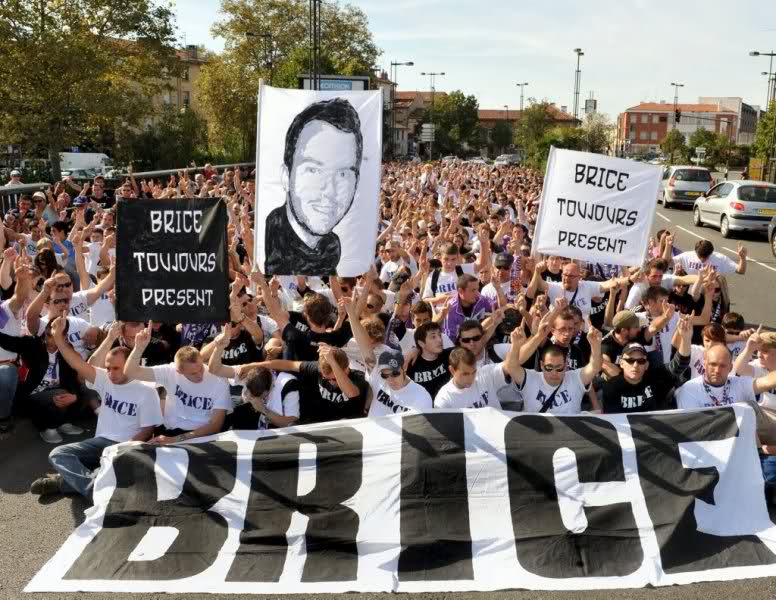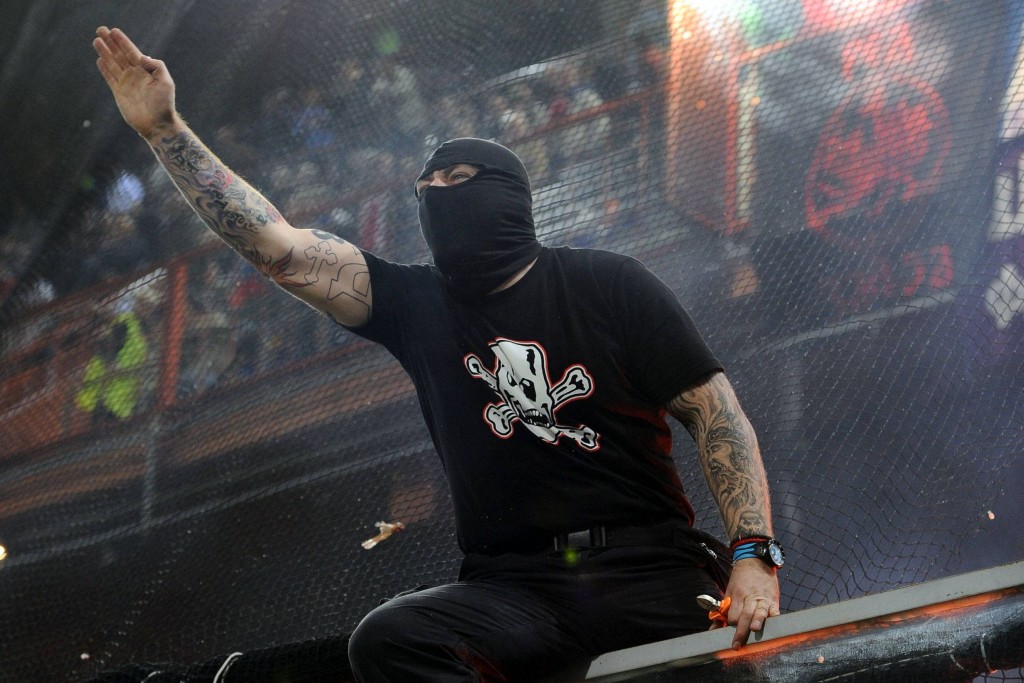
Von Miloš Marković
Over the past two decades, Serbia has become notorious for its football hooliganism. As a country that intends to instill democratic values in its people and to progress on the path to the European Union, Serbia has struggled to reform and regulate many aspects of its social life—unfortunately football stands low on its long list of priorities.
The Serbian fans have taken advantage of its lenient football authorities by using football matches as platform from which to express their opinions and their general sense of discontent. At the same time they often abuse their rights at the stadiums, well aware that they are unlikely to be punished for crossing the line.
In conjunction with underground criminal structures, as reported by the United States Department of State Bureau of Diplomatic Security’s Overall Crime and Safety Report, the terraces have long been the stage used to promote xenophobia and extreme nationalism. During matches, this often leads to physical confrontations between rival sets of hooligans—assaults have resulted in serious injuries and two deaths over the past seven years.
The most notorious groups of hooligans in Serbia are Partizan’s Grobari (Gravediggers) and Red Star’s Delije (Heroes). Another Belgrade club, FK Rad, and their group called “United Force” are also among the most prominent organizations of Serbian fans known for their extremist behaviour.
The two deaths occurred in 2008 when a fan was killed near Novi Sad after clashes between FK Vojvodina fans and Grobari, and in 2009 when Brice Taton—a fan of Toulouse FC—was attacked with baseball bats and flares by a group of Partizan fans.
Taton Tragedy
The murder of the 28-year-old French supporter of Toulouse FC in the centre of Belgrade has cast a shadow on Serbia’s image in the world. The Taton was attacked on September 17, 2009 outside a bar on the day of the Europa League encounter between Partizan and their French opponents.
Subsequently Taton was repeatedly hit in the head and chest by a group of more than 20 men armed with baseball bats, flares, and iron bars. Two other French fans were also injured. Police arrested 14 suspects, and the sad fact is that six years later, the trial for the murder of Brice Taton has not yet concluded.

One of the Partizan fans accused in the case is Đorđe Prelić, who was initially convicted to 35 years in prison; his lawyers have denied the accusations and have prolonged the trial. In the meantime, while some of the fans convicted of the assault have already served their penalties, Đorđe Prelić is still awaiting his final verdict.
Only a couple of days after the assault on Brice Taton, an Australian man was attacked in a Belgrade park—and the inability of the Serbian government to control the surge of extremism became a major issue.
The death of the French national prompted officials to re-examine the ties between the fans and criminal groups. Money laundering, drug dealing, and other criminal activities are suspected. Hooligan groups have taken control over football, and the most notorious fan clubs intimidate both managers and the players who live in constant fear.
A year after the Taton tragedy, another shadow descended upon Serbian football.
Ivan the Terrible and the Genoa Incident
Serbia’s EURO 2012 qualifying campaign was marred by yet another international incident on October 12, 2010, when Serbia travelled to Genoa to face the home side Italy in what was supposed to be a derby game of Group C.
Six minutes after kick off, the game was stopped when Serbian fans threw missiles and fireworks onto the pitch. The huge group of hooligans involved had come to Italy with one purpose in mind. It was clear before the game even started that supporting their team was not the reason for their visit.
A group of masked hooligans had earlier forced their way into the bus which carried the Serbian players to the Stadio Luiggi Ferraris. Their intention was to hurt Serbia’s goalkeeper Vladimir Stojković, former Red Star goal keeper who was at the time transferred to Partizan, Red Star’s biggest rivals. Defended by his teammates Dejan Stanković and Nikola Žigić, Vladimir Stojković continued to the game to play for his country.

The Serbian and Italian authorities did little to prevent the hooligans from entering Italy, let alone the football stadium, and the incident was a disaster waiting to happen.
The Serbian fans mounted a crowd barrier and threw flares onto the pitch. The masked and tattooed Ivan Bogdanov, one of the Red Star fan leaders (called “Ivan the Terrible” by the Italian media) then climbed the fences, used a wire cutter to slice open a mesh fence, encouraged other fans to join the riot, and burned the Albanian flag. The game in Genoa was ultimately abandoned, Italy was awarded a 3-0 win, and Bogdanov was arrested while attempting to escape the Italian authorities by hiding in the trunk of a bus.
Serbia was made to play their next qualifying game against Northern Ireland behind closed doors, while the Italian football federation (FICG) was punished with a suspended one-match stadium ban.
Bogdanov was deported to Serbia without serving his sentence in Italy and he notoriously returned to the spotlight this year in the Serbia vs Albania game in Belgrade—yet another game abandoned after scenes of violence. Bogdanov was one of the fans who entered the pitch when the game was stopped by a drone carrying a flag of “Greater Albania”.
It is important to point out that charges against Bogdanov were dropped by the prosecutors. This was not the first time that this infamous hooligan was set free following his involvement in illegal football incidents—which raises the suspicion of ties between the fans and criminal groups, and even state officials.
Kosovo Protests
Politics play an important role in Serbian football. Political messages are often seen at the stadiums all over Serbia, with the fans voicing their thoughts on various subjects including military leaders accused of crimes against humanity—such as Ratko Mladic who is seen by some Serbians as a hero—but recently, most often, Kosovo.
Strong feelings over Kosovo’s bid for independence under UN protection, and Serbia’s bid to stop the ongoing process has poured over into the football stadiums. Protective of their historical heritage in the southern part of the country—the now self-proclaimed independent county of Kosovo—the Serbian fans rose in protest over the destruction of a number of churches and the monasteries in recent years by the largely ethnic Albanian population of Kosovo.
There should be no place for politics on the football stands, and Serbian clubs were frequently penalized over the Kosovo banners at their international games, but Red Star fans made sure their voice was heard against Vojvodina late in October.
Derby game was opened with a fascinating choreography, and the game was followed by a charity musical concert with all the proceeds sent in support of the Serbian families in Kosovo.
Ultimately, in this case, politics from the terraces was directed to a good cause. Serbian football matches, however, are rarely just about sport any more. Hooliganism also has taken the family aspect out of the game, as taking children to games in Serbia is done at great risk, and it has long become safer to watch football on television.
A holder of Master’s degree in English language and literature, Miloš Marković is an Editor-in-Chief at Sportske.net. Passionate about English language and football, Miloš Marković is also a huge Premier League fan. You can find him on Twitter under @milosemarkovicu.
Quelle: futbolgrad, 10. November 2015